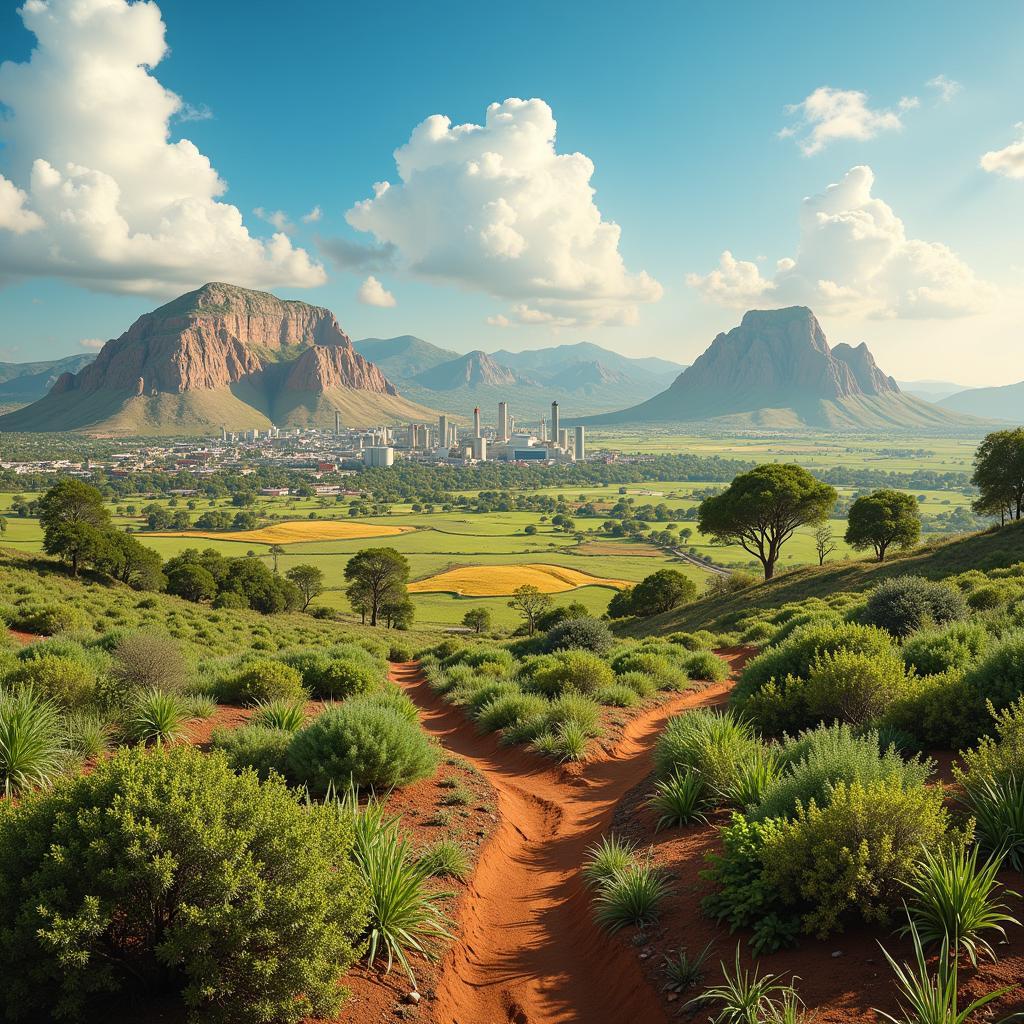Exploring the African Veldt: A Journey Through Savanna and Grassland
The African Veldt, a vast expanse of open grassland and savanna, conjures images of iconic wildlife and breathtaking sunsets. This diverse ecosystem plays a vital role in the continent’s biodiversity, supporting a rich tapestry of life and captivating the imagination of travelers worldwide. From the rolling plains of the Serengeti to the acacia-dotted landscapes of Kruger National Park, the veldt offers a unique glimpse into the heart of Africa.
Understanding the Vast African Veldt Ecosystem
The term “veldt” originates from the Afrikaans word for “field,” but it encompasses much more than just open fields. It describes a range of habitats, including grasslands, savannas, shrublands, and even some lightly wooded areas. These areas are characterized by a predominantly grassy groundcover, interspersed with scattered trees and shrubs. The climate varies depending on the region, with distinct wet and dry seasons shaping the landscape and influencing the behavior of its inhabitants. The veldt plays a crucial role in supporting a delicate balance of life, from the smallest insects to the largest mammals.
The African veldt is not a monolithic entity. It is composed of several distinct types of veldt, each with unique characteristics. These include Highveld, Lowveld, Bushveld, and Thornveld. The Highveld, for instance, is characterized by high altitude grasslands, while the Lowveld is located at lower elevations and experiences warmer temperatures. The Bushveld features denser vegetation, including shrubs and trees, while the Thornveld is dominated by thorny acacia trees and shrubs. These variations contribute to the incredible biodiversity found across the African veldt.
After a complete understanding of the ecosystem, you might want to learn more about the animals that live in it.
african daisy southern california
The Iconic Wildlife of the African Veldt
The African veldt is home to an incredible array of wildlife, many of which are iconic symbols of the continent. Lions, elephants, giraffes, zebras, and rhinoceroses are just a few of the magnificent creatures that roam these vast landscapes. The interplay between predator and prey is a constant drama, shaping the ecosystem and driving the evolutionary adaptations of its inhabitants.
The abundance of herbivores, like zebras and wildebeest, attracts large predators such as lions and cheetahs. These predators, in turn, help to regulate the populations of herbivores, preventing overgrazing and maintaining the health of the veldt ecosystem. The intricate web of life in the veldt is a testament to the power of natural selection and the delicate balance of nature.
What is the Climate of the African Veldt Like?
The climate of the African veldt is characterized by distinct wet and dry seasons. The wet season typically occurs during the summer months, bringing much-needed rainfall to the parched landscape. This period of abundance transforms the veldt into a lush green paradise, supporting the growth of new vegetation and providing sustenance for the animals that call it home.
The dry season, on the other hand, can be harsh and unforgiving. Water becomes scarce, and the vegetation withers and turns brown. Animals must adapt to survive, often migrating long distances in search of water and food. This cyclical pattern of wet and dry seasons has shaped the evolution of the veldt’s flora and fauna, leading to remarkable adaptations for survival.
Professor Adebayo Olufemi, a renowned ecologist specializing in African ecosystems, notes, “The alternating wet and dry seasons are the heartbeat of the veldt. They dictate the rhythms of life, driving migration patterns and shaping the evolutionary adaptations of the species that inhabit this dynamic landscape.”
The Human Impact on the African Veldt
Human activities, such as agriculture, urbanization, and poaching, pose significant threats to the delicate balance of the African veldt. Habitat loss and fragmentation are particularly concerning, as they disrupt migration routes and isolate populations of wildlife. Conservation efforts are crucial to protect this vital ecosystem and ensure the survival of its iconic inhabitants.
Dr. Khadija Mwangi, a leading conservationist in Kenya, emphasizes the importance of community-based conservation initiatives. “Engaging local communities in conservation efforts is essential for the long-term protection of the African veldt. By empowering local people to become stewards of their natural heritage, we can create a sustainable future for both people and wildlife.”
Conclusion: Preserving the African Veldt for Future Generations
The African veldt is a place of unparalleled beauty and ecological significance. From its iconic wildlife to its dramatic landscapes, the veldt offers a unique glimpse into the heart of Africa. Protecting this precious ecosystem for future generations requires a concerted effort from individuals, governments, and organizations worldwide. By working together, we can ensure that the wild spirit of the African veldt endures for centuries to come.
FAQ
- What does the word “veldt” mean? The word “veldt” originates from the Afrikaans word for “field,” and it refers to open grasslands and savannas in Southern Africa.
- What animals live in the African veldt? The African veldt is home to a wide variety of animals, including lions, elephants, giraffes, zebras, rhinoceroses, and many more.
- What is the climate of the African veldt like? The African veldt has a climate with distinct wet and dry seasons, influencing the behavior and migration patterns of its wildlife.
- What are the threats to the African veldt? Human activities, such as agriculture, urbanization, and poaching, pose significant threats to the veldt ecosystem.
- What can be done to protect the African veldt? Conservation efforts, including community-based initiatives and anti-poaching measures, are crucial for protecting the African veldt.
When you need assistance, please contact us at Phone Number: +255768904061, Email: kaka.mag@gmail.com, or visit our address: Mbarali DC Mawindi, Kangaga, Tanzania. We have a 24/7 customer service team.


